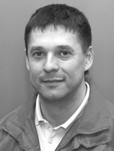Anthropometric, physiological characteristics and functionality rating tests and analysis in women’s strength sports
Фотографии:
ˑ:
Associate Professor P.P. Nikolayev1
PhD, Associate Professor Y.V. Shikhovtsov1
PhD, Associate Professor I.V. Nikolaeva1
PhD, Associate Professor L.A. Ivanova1
M.N. Piskaykina1
1Samara State University of Economics, Samara
The study analyzes a few issues of importance for the anthropometric, physiological characteristics and functionality rating tests and analysis in the women’s strength sports. Input data for the study were mined in more than 100 national and foreign study reports. The sample anthropometric characteristics were obtained using an updated version of the V.V. Bunak’s method; the functionality was profiled by the cardiovascular system response to physical workloads ratings using the Ruffier indices and HR data; and wrist/ deadlift dynamometry was used to rate the muscular strength. The study was performed at Samara State University of Economics in 2015-18 to find, among other things, the gender-specific differences in the test rates that are critical for the competitive success in the women’s sport disciplines.
Keywords: female body, anthropometric / physiological characteristics / functionality specifics, strength sports.
References
- Bulychev I.I., Popov V.F. Zhenschhiny i sport [Women and sport ]. Gendernye otnosheniya v Rossii: istoriya, sovremennoe sostoyanie, perspektivy. mater. mezhdunar. nauch. konf. [Gender relations in Russia: history, current state, prospects: Proc. Intern. sci. Conf.]. Ivanovo, 1999, pp. 167-172.
- Gasanova Z.A. Zhenshchinyi v iznachalno muzhskikh vidakh sporta [Women in originally male sports]. Teoriya i praktika fiz. kultury, 1996, no. 7, pp. 18-22.
- Gorulev P.S. Upravlenie sportivnoy podgotovkoy zhenshchin v tyazheloy atletike s uchetom dimorficheskikh razlichiy rabotosposobnosti: avtoref. dis. dokt. ped. nauk [Management of athletic training in women's weightlifting in view of dimorphic differences in working capacity: Doct. diss. abstract. dis. (Hab.)]. Chelyabinsk, 2006, 48 p.
- Guba V.P. Osnovy sportivnoy podgotovki: metody otsenki i prognozirovaniya (morfobiomehanicheskiy podkhod) [Fundamentals of sports training: methods of assessment and prediction (morphobiomechanical approach)]. Scientific-method. guide. Moscow: Sovetskiy sport publ., 2012, 384 p.
- Guba V.P., Marinich V. V. Teoriya i metodika sovremennykh sportivnykh issledovaniy [Theory and methods of modern sports research]. Moscow: Sport publ., 2016, 230 p.
- Dorokhov R.N., Guba V.P. Sportivnaya morfologiya [Sport morphology]. Study guide. Moscow: SportAkademPress publ., 2002, 230 p.
- Karpeeva N.V. Fiziologicheskaya kharakteristika vliyaniya silovykh uprazhneniy na organizm zhenschin reproduktivnogo vozrasta: avtoref. dis. kand. biol. nauk [Physiological characteristics of effect of strength exercises on the body of reproductive aged women. PhD diss. abstract]. Ryazan, 1999, 23 p.
- Krayushkin S.S. Mediko-fiziologicheskie osobennosti adaptivnykh reaktsiy zhenskogo organizma: avtoref. dis. kand. med. nauk [Medical physiological features of adaptive reactions of female body. PhD diss abstract]. Moscow, 2013, 22 p.
- Mikhaleni V.N. Uchet osobennostey zhenskogo organizma pri zanyatiyakh fizicheskim vospitaniem [Physical education in view of female body characteristics]. Fizicheskoe vospitanie studentok [Physical education of female students]. Study guide. Minsk: Design Pro publ., 1998, pp. 5-17.
- Nikolaev P.P., Nikolaeva I.V. Integralny analiz modelnykh morfofunktsionalnykh kharakteristik devushek [Integrated analysis of model morphofunctional characteristics of female representatives of mass categories in power triathlon]. Teoriya i praktika fiz. kultury, 2017, no. 9, P. 104.
- Radzievsky A.R. Osobennosti adaptatsii zhenskogo organizma k napryazhennoy fizicheskoy (sportivnoy) deyatelnosti [Features of adaptation of female body to strenuous physical (sports) activity]. Adaptatsiya sportsmenov k trenirovochnym i sorevnovatelnym nagruzkam [Adaptation of athletes to training and competitive loads]. Kiev, 1984, pp. 59-64.
- Sologub E.B. Fiziologicheskie osnovy spetsialnoy trenirovki zhenschin [Physiological basis of women's special training]. Leningrad: SCOLIPE publ., 1987, 72 p.
- Solodkov A.S., Sologub E.B. Fiziologiya cheloveka. Obschaya. Sportivnaya. Vozrastnaya [Human physiology. General. Sports. Developmental]. Moscow: Terra Sport, Olympia Press publ., 2001, pp. 217-300.
- Socha T. Zhenskiy sport (novye znaniya -novye metody trenirovki [Women's sports (new knowledge, new training methods)]. Moscow: Teoriya i praktika fiz. kultury, 2002, 202 p.
- Fedorov L.P. Teoretiko-metodicheskie osnovyi zhenskogo sporta: avtoref. dis. dokt. ped. nauk [Theoretical-methodical basics of women's sports: Doct. diss. abstract. dis. (Hab.)]. St. Petersburg, 1995, 57 p.
- Khotimchenko A.V., Khotimchenko P.V. Osobennosti postroeniya podgotovitelnogo perioda v zhenskom silovom troebore [Pre-season design features in women's triathlon]. Fizicheskaya kultura i sport v sovremennom obschestve [Physical education and sports in modern society]. FESAPE publ., Khabarovsk, 2003, pp. 234-238.
- Shakhlina L.G. Mediko-biologicheskie osnovy sportivnoy trenirovki zhenschin [Biomedical basics of women's sports training]. Kiev: Naukova Dumka publ., 2001, 326 p.
- Sheiko B.I. Pauerlifting [Powerlifting] Study guide. Moscow: EAM Sportservis publ., 2005, 544 p.



